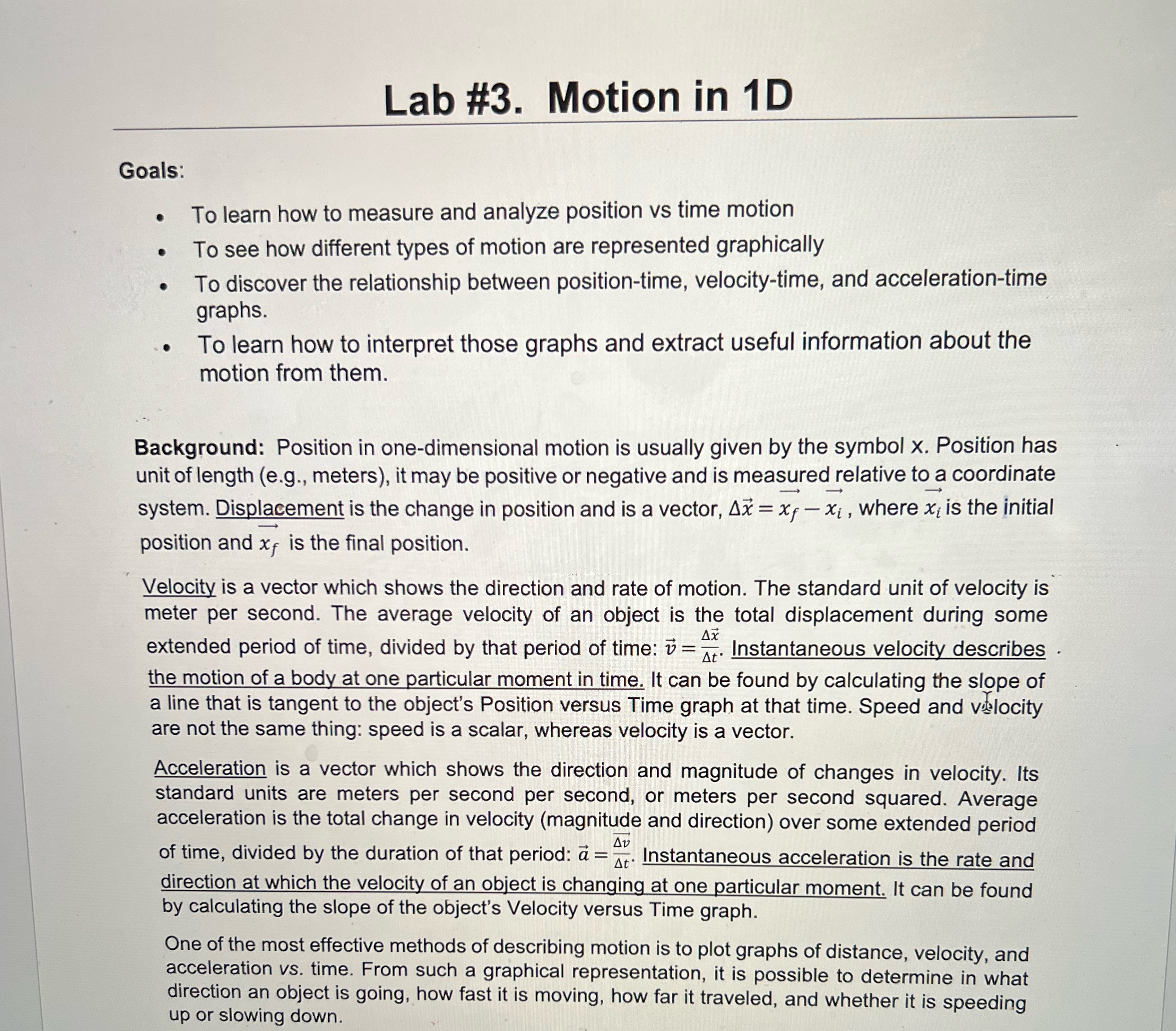Lab #3. Motion in 1D Goals: To learn how to measure and analyze position vs time motion . To see how different types of motion are represented graphically To discover the relationship between position-time, velocity-time, and acceleration-time graphs. To learn how to interpret those graphs and extract useful information about the motion from them. Background: Position in one-dimensional motion is usually given by the symbol x. Position has unit of length (e.g., meters), it may be positive or negative and is measured relative to a coordinate system. Displacement is the change in position and is a vector, Ax = X - X1 , where x, is the initial position and xf is the final position. Velocity is a vector which shows the direction and rate of motion. The standard unit of velocity is meter per second. The average velocity of an object is the total displacement during some extended period of time, divided by that period of time: v = At. Instantaneous velocity describes Ax the motion of a body at one particular moment in time. It can be found by calculating the slope of a line that is tangent to the object's Position versus Time graph at that time. Speed and velocity are not the same thing: speed is a scalar, whereas velocity is a vector. Acceleration is a vector which shows the direction and magnitude of changes in velocity. Its standard units are meters per second per second, or meters per second squared. Average acceleration is the total change in velocity (magnitude and direction) over some extended period of time, divided by the duration of that period: a = At. Instantaneous acceleration is the rate and direction at which the velocity of an object is changing at one particular moment. It can be found by calculating the slope of the object's Velocity versus Time graph. One of the most effective methods of describing motion is to plot graphs of distance, velocity, and acceleration vs. time. From such a graphical representation, it is possible to determine in what direction an object is going, how fast it is moving, how far it traveled, and whether it is speeding up or slowing down







